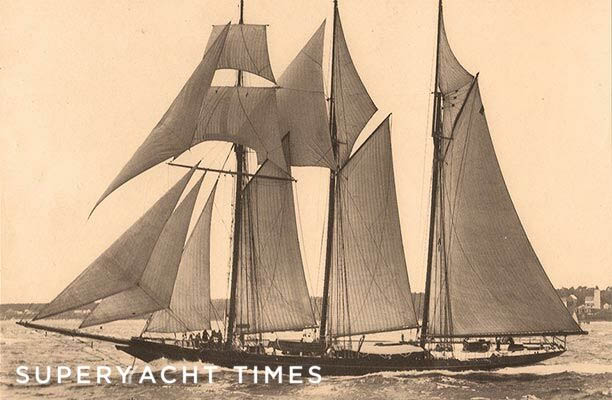The D.R. Owen was considered the first shipwreck of the Chequamegon Bay area of Lake Superior.
Schooners were primarily designed for cargo, passengers, and fishing. A schooner is a type of sailing vessel defined by its rig: fore-and-aft rigged on all of two or more masts, with the foremast generally being shorter than the mainmast in the case of a two-masted schooner. The topsail schooner, a common variant, also has a square topsail on the foremast, to which a topgallant can be added. Different definitions make it unclear whether the addition of a fore course would transform such a vessel into a brigantine. Many schooners are gaff-rigged, but Bermuda rig and staysail schooners are also examples.
W. R. Sutherland leased the schooner D.R. Owen for lumber hauling. She sank on September 8, 1874, with no lives lost.
During the early 1870s, Ashland was a small settlement surrounded by densely forested wilderness. W.R. Sutherland established the Ashland Lumber Company, the first sawmill in Ashland, after seeing the potential for profit in the area’s future logging activity. (It should be noted that this company is not to be confused with a later business of the same name, in which Sutherland was not involved.) Sutherland’s business relied heavily on transporting lumber to Isle Royale, which lacked its own sawmill. The D.R. Owen was hired to ferry lumber to the island.
The Owen left the island after delivering a load of lumber on Thursday, September 6, 1874. However, an extremely violent storm soon arrived. Poor visibility, strong winds, and rough seas made life difficult for the crew. The hull had a leak, and the sails had been completely destroyed by the high winds.
The crew made an attempt to wait out the storm. The stormy conditions remained unchanged on Friday, September 7. Finally, land appeared on the horizon on Saturday morning, September 8. The Apostle Islands were seen, indicating that the storm had blown the water-logged ship in the right direction. By that afternoon, the ship had sunk in an area east of Ashland, near the mouth of the Bad River.





